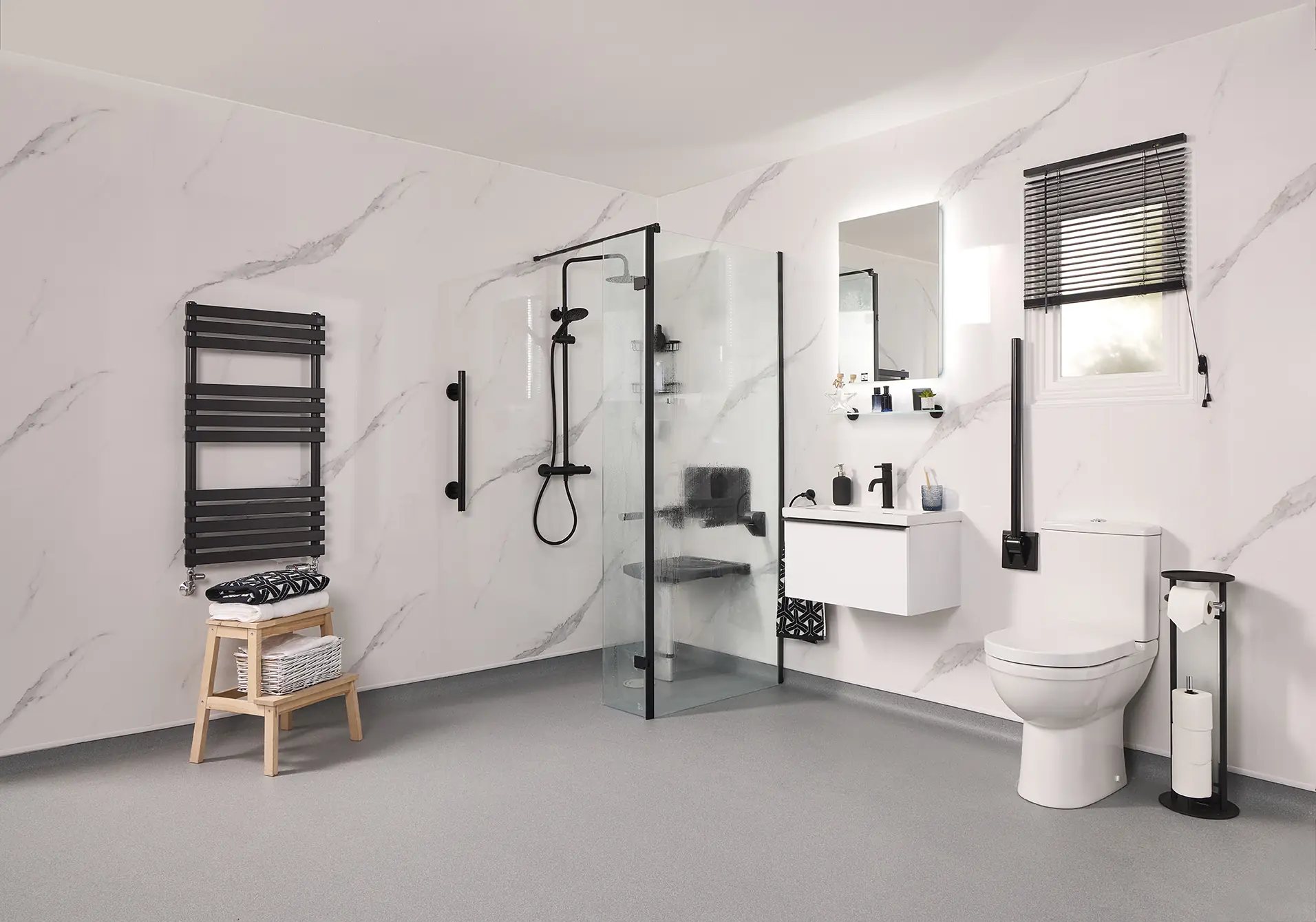In the pursuit of inclusivity and independence, the realm of accessible infrastructure plays a pivotal role. Among the key components of this infrastructure are disabled showers, which stand as symbols of empowerment. These disabled showers offer individuals with diverse mobility needs the opportunity to bathe with dignity and ease. This comprehensive exploration delves into the significance, features, installation, benefits, and future prospects of a disabled shower. It sheds light on their transformative impact on EA mobility.
Understanding A Disabled Shower
Disabled showers, also referred to as accessible showers or ADA showers, are purpose-built bathing facilities tailored to cater to the unique requirements of individuals with disabilities or limited mobility. They are designed to provide ease of access and ensure safety during bathing activities. Unlike conventional showers, disabled showers prioritise accessibility, safety, and comfort, facilitating independent bathing experiences for users. These showers are equipped with a plethora of accessibility-enhancing features. These include grab bars, non-slip flooring, adjustable showerheads, and spacious layouts to accommodate mobility aids such as wheelchairs or walkers.
Features of A Disabled Shower
The design of disabled showers encompasses a range of features aimed at promoting ease of access and usability. Walk-in showers for disabled individuals eliminate the need to navigate cumbersome barriers, offering seamless entry and exit. Additionally, baths for the disabled often incorporate low-threshold or level-access designs, ensuring smooth transitions for users with mobility aids. Mobility bath showers are equipped with strategically placed grab bars, providing support and stability during showering activities. Furthermore, disabled showers prioritise user comfort through features such as adjustable water temperature controls and handheld showerheads, catering to individual preferences and needs.
Installation Considerations
The installation of disabled showers requires careful planning and adherence to accessibility guidelines to ensure optimal functionality and safety. Prior to installation, it is essential to assess the specific requirements and preferences of the intended users. This involves considering factors such as mobility limitations, space constraints, and existing plumbing configurations. Collaboration with experienced contractors or accessibility specialists is recommended to navigate regulatory requirements and implement appropriate modifications to existing bathroom spaces. From structural adjustments to the installation of specialised fixtures, the process of integrating disabled showers demands meticulous attention to detail and a commitment to promoting inclusivity. This ensures that the final result not only meets but exceeds the accessibility needs of individuals with diverse mobility requirements.
Benefits of Disabled Showers
The adoption of disabled showers yields a multitude of benefits for individuals with disabilities, caregivers, and society as a whole. Foremost among these benefits is the restoration of independence and autonomy to users. This empowers them to engage in daily bathing routines with confidence and dignity, fostering a sense of self-reliance and well-being. By eliminating barriers to access and providing ergonomic features, disabled showers contribute to enhanced safety and comfort. This, in turn, reduces the risk of slips, falls, and injuries effectively. Moreover, the presence of disabled showers fosters a sense of inclusivity and belonging, signaling a commitment to accessibility and equality within public and private spaces.
In addition to the individual benefits, disabled showers offer practical advantages for caregivers and support personnel. The ease of use and maintenance associated with these showers streamline caregiving responsibilities. This allows caregivers to focus on providing personalised assistance and support, enhancing the quality of care and fostering stronger relationships between caregivers and care recipients. Furthermore, the incorporation of universal design principles in disabled showers promotes universal access, benefiting individuals of all ages and abilities.
Future Prospects and Innovations
Looking ahead, the evolution of disabled showers is poised to be shaped by ongoing advancements in technology, design, and accessibility standards. Emerging trends such as smart shower systems, which integrate voice-activated controls and sensor-based features, hold promise for enhancing the user experience. They also further optimise accessibility. Additionally, innovations in materials and construction techniques are driving the development of more durable, hygienic, and aesthetically pleasing shower solutions. These solutions are tailored to the needs of individuals with disabilities.
Furthermore, the growing recognition of the importance of inclusive design principles is influencing the mainstream adoption of accessible features. This trend is evident in both residential and commercial settings.
In conclusion, disabled showers represent a cornerstone of accessible infrastructure. They offer individuals with disabilities the opportunity to bathe with dignity, independence, and safety, reaffirming their right to equal access and inclusion in society. By prioritising inclusivity, comfort, and usability, these showers transcend mere functional necessity to become symbols of empowerment and equality. As society progresses towards a more inclusive future, the importance of disabled showers in promoting EA mobility cannot be overstated. Through ongoing innovation, collaboration, and advocacy, we can ensure that disabled showers continue to serve as beacons of accessibility. This transformative approach not only enhances individual lives but also strengthens communities by promoting equality, dignity, and inclusivity for all members.













